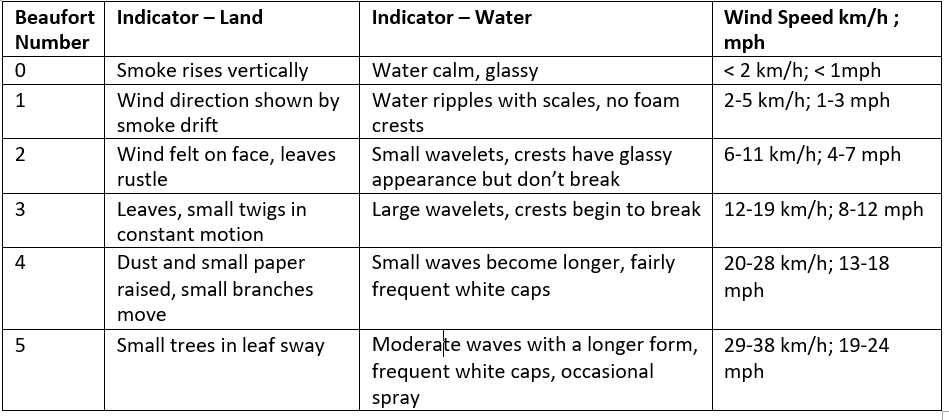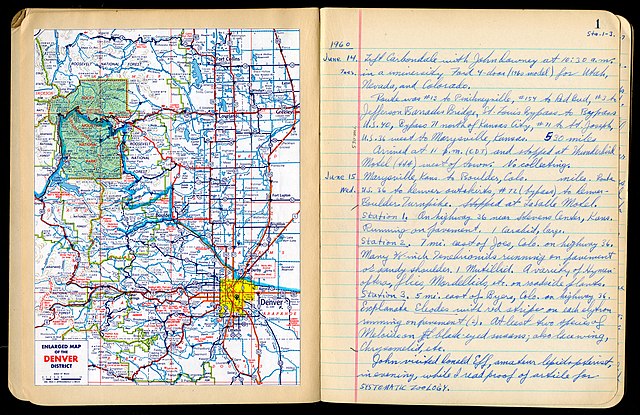In many of the programs I teach, it is expected that students will keep detailed notes and/or observations of labs and field outings in an organized notebook. This is a two-part undertaking that involves: (1) observation and note-taking in the field (making sure you are dating the pages of your notebook and adding your last name as well) and (2) writing a formal Field Journal entry at the end of each field day.
Journal vs. Notebook
Notebook. The notebook you use for informal note-taking is important, but is generally used only by you. I recommend you use a waterproof field notebook that can easily fit into a large pocket (I like Rite in the Rain All-weather Universal No. 370F-M). Although the notebook is for your own use, it is essential that you make sure to enter your date and location notes on each page along with your last name. After your field time has ended, you should immediately (by the end of the same day) enter and organize your observations in your journal.
Journal. The journal is a clear and formal compilation of the day’s field observations and it written after the field activity ends. Think of it as rewriting jotted down notes for studying. Also think of it as a unique and invaluable archive of observations of the natural world at a very specific time and place: maybe a time and place only you witnessed (or you and a few colleagues). The journal could be read at a later time by another person in order to understand what the environment was like today.
The formal Field Journal itself will be kept in a three-ring binder. The traditional style is a small binder approximate 5.5 x 8 inches with archival-quality paper (acid-free, lignin-free, cotton fiber rag), but you may use a larger binder and a paper of your choice, though you need to make sure you have a means of protecting your journal from the elements. The Field Journal should be organized in chronological order with pages numbered and a table of contents indicating page ranges for each lab/field outing/date.
**SPECIAL NOTE FOR FIELD ORNITHOLOGY 2024 – you may organize your formal field observations in your field notebook. Make sure to clearly indicate which pages represent the formal entry for each date in your table of contents.
Each entry includes (in order):
OBSERVER/DATE
- Your name (first and last)
- Date (include month, day, year)
- Time (24-hour clock)
LOCATION INFORMATION
- Location description (a specific description good enough to guide someone unfamiliar with our region to your specific place)
- Location map (draw a map from the nearest universally recognizable landmark such as cross streets, a clearly identifiable structure, etc. – again the goal is to guide someone unfamiliar with the area to your place)
- Location coordinates (latitude, longitude in decimal degrees)
HABITAT INFORMATION
- A description of the basic type of habitat/environment you are observing (e.g. forest, coastline) with as much specific information included to provide relevant background to your observations (e.g. the coast line may be a tidal mudflat or it may be rocky and it may be high or low tide – such differences would dramatically influence what you might observe. Likewise, a forest may be dominated by a certain type of tree and may have a specific growth stage such as old growth or early successional.)
CLIMATE INFORMATION
- Temperature (indicate your units)
- Wind Condition – Use the Beaufort Scale (below). Report the Beaufort number as well as the wind speed range (and make sure to include the proper units)

- Sky condition – US Weather Bureau codes (yes, there is no # 3 or 6). Include a descriptor with the number.

DATA COLLECTED/OBSERVATIONS.
The data collected/observations will vary from assignment to assignment but will typically include:
- A species list of birds, plants, or other biota.
- Data collected for a research project in the form of descriptions, categories, counts, and measurements.
- Descriptive or quantitative characterizations of the environmental from the micro to the macro scale.
- Additional observations. Anything you note or observe individually. Making individual observations helps to ensure that the group doesn’t collectively miss any important information.
For species lists include the scientific name, the Genus, Family, and Order. The taxonomic reference you should refer to for birds is the AOS Checklist of North and Middle American Birds https://checklist.americanornithology.org/
When listing species, provide a description of what you observed such as size (this can be relative such as “smaller than a robin, larger than a sparrow” or “smaller than a goose but larger than a crow”), color (the 2-3 most prominent colors), behavior (walking on the ground, perching on a fencepost), and sounds. You may only hear a bird, and a detailed description of what you heard, in addition to your location and where the sound seemed to come from can be valuable.
In many cases, you will be collecting data using a specific method for analysis. It is important to make sure that your field notebook includes all the information needed to complete your work.
If you have an opportunity to work in groups, each group member should keep a complete record of the activity. This ensures that field data are never truly lost be- cause each group member has a complete record of all important data.
ILLUSTRATIONS
They do not need to look great, but can help you describe your observations in an alternative format to writing. Aim to include at least two illustrations in each entry (one can be your map).
NARRATIVE OF THE EXPERIENCE
The narrative captures the essence what happened. Think of this part as the conversational story you would tell another person about what you did in the field (who you were with, what you intended to do, what did, how you solved problems that you encountered, etc.).
EXAMPLES of FIELD JOURNALS
From Birds, Patterns, and Poetry (Winter 2022). These journals also include poetry work.
Klemstrud_ForestryWildlife_2023
Cinder Camerano_Field_Skills 2023
Kaelin Andruss_FieldSkills 2023
Ayana Hunt Nature Poetry Journal Birds Patterns Poetry 2022
Addie Willsrud_Nature Poetry Journal Birds Patterns Poetry 2022
Abbey Ryle Nature and Poetry Journal Birds Patterns Poetry 2022
